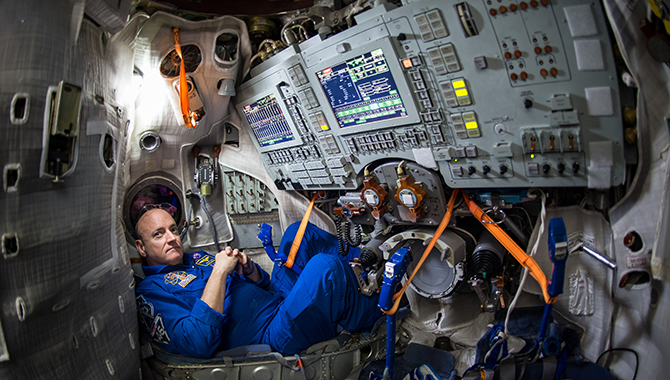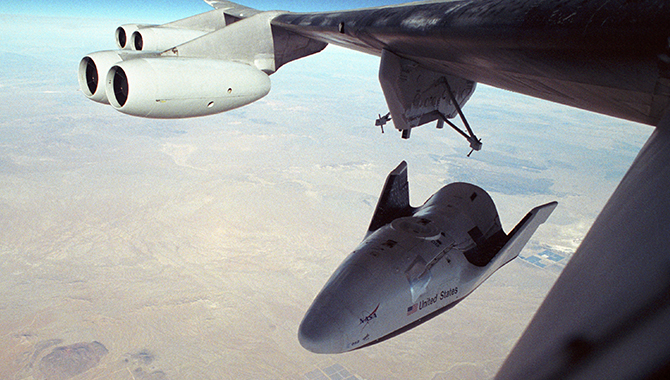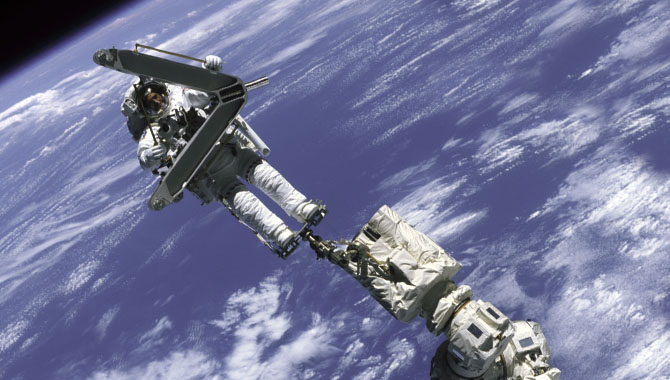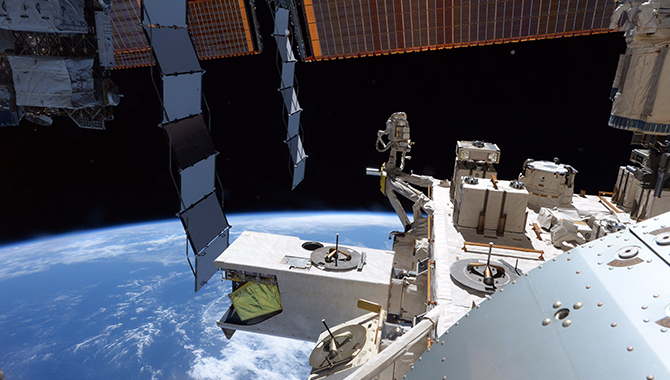
The Bigelow Expandable Activity Module (BEAM) during installation on the Tranquility node of the International Space Station.
Photo Credit: NASA
By testing a novel inflatable habitat on the International Space Station (ISS), NASA looks to expand possibilities for crewed missions while containing costs.
On April 8, 2016, the SpaceX Dragon capsule transported the Bigelow Expandable Activity Module (BEAM) to the ISS. BEAM, the first human-rated expandable structure launched to space, is a prototype of an inflatable area for astronauts to live and work. It will provide protection from radiation, space debris, and other aspects of the space environment.
BEAM is constructed of “soft goods”: layers of Vectran, which is stronger than Kevlar, around a rustproof aluminum frame. The layers include an air barrier, a load-bearing restraint, micro-meteroid and orbital debris (MMOD) layers, external MLI layers, and an exterior BETA cloth. The module, which weighs about 3,000 pounds, is 5.7 feet long and nearly 7.75 feet wide when packed for transport. It expands significantly upon inflation, reaching 13 feet in length by 10.5 feet in diameter.
During the two years it is attached to the ISS, BEAM will test and validate expandable habitat technology, increasing its Technology Readiness Level (TRL) to 9, and the TRL of soft goods materials to 8. Tests will assess the module’s radiation and MMOD protection capabilities as well as pressure and temperature stability. No crew will live in BEAM while it flies on the ISS, but they will enter the module periodically to monitor its performance and collect data.
BEAM was installed on the Tranquility node of the ISS on April 16. An initial attempt to expand the module on May 26 was suspended after internal pressure within BEAM rose abruptly. The team reduced the pressure and let the module relax before renewing the process on May 28. This time, the module expanded as expected. On June 10, the first crew entered BEAM: astronaut Jeff Williams and cosmonaut Oleg Skripochka went into the module to collect air samples and deployment data from sensors.
Human-rated expandable modules like BEAM could serve multiple purposes in space. In low Earth orbit (LEO), they will support the expansion of commercial activities. Deeper in space, they may provide habitat options for long-duration crewed missions. Because expandable modules are more compact and lighter than traditional habitats, they offer launch and transport cost savings compared with rigid structures. As NASA begins designing crewed missions to Mars, the greatly decreased payload size of expandable habitats may reduce the number of cargo trips needed to deliver supplies to the red planet before astronauts arrive.
BEAM was developed by Bigelow Aerospace of Las Vegas, NV and is sponsored by NASA’s Technology Demonstration Office. The test and validation period is expected to continue until September 2017. When tests are complete, BEAM will be jettisoned from the ISS and then burn up on reentry into Earth’s atmosphere.
Learn more about BEAM in this animated video.
Watch a time-lapse video depicting the expansion of BEAM on the ISS.









